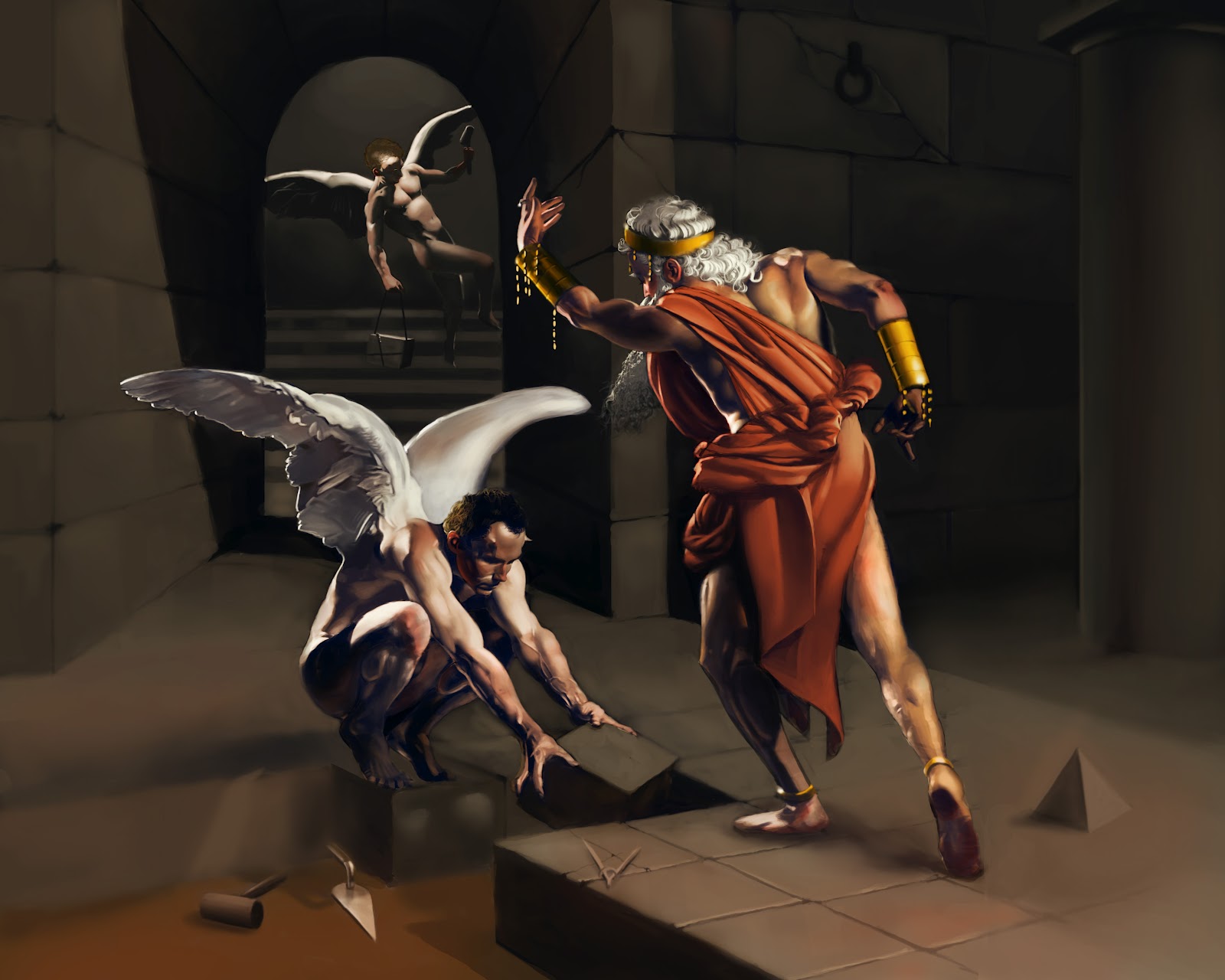 Submitted by Shazaam on
Submitted by Shazaam on

According to pre-Islamic lore, the djinn are born of smokeless fire (which in modern terms could be plasma). They live very long lives but they are not immortal. According to some accounts, they live with other supernatural beings in the Kaf, a mythical range of emerald mountains that encircles the Earth. In modern terms, they live in a parallel dimension.
The djinn like to roam the deserts and wilderness and inhabit caves. They are usually invisible, but have the power to shape-shift to any form, be it insect, animal, human, or entity. They have long been regarded as malicious and dangerous, capable of bringing bad luck, illness, disaster and death. Even when granting favors, they have a trickster nature and can twist events for the worse.
According to tradition, the djinn's confinement in said bottle was because of Solomon. As some of the jinn remained true to Solomon and Allah, others became evil and rebellious. To punish the evil ones, Solomon used his power to trap them in various flasks/bottles. Thus when a person discovers a jinn, they are not automatically guaranteed a servant who will grant all their wishes-they may have to cleverly fight for their lives.
Though the djinn can be conjured in magical rites, they are difficult to control. The legendary Biblical King Solomon was said to have control over the djinn. God gave Solomon a copper and iron magic ring that enabled him to subdue djinn, and which protected him from their powers. In some accounts, the ring was inscribed with a pentacle, and in other accounts it was set with a gem, probably a diamond, that had a living force of its own. With the ring, Solomon branded the necks of the djinn as his slaves and set them to working building the first Temple of Jerusalem and even the entire city of Jerusalem.
One story tells that a jealous djinni (sometimes identified as Asmodeus) stole Solomon’s ring while he bathed in the river Jordan. The djinni seated himself on the king’s throne at his palace and reigned over his kingdom, forcing Solomon to become a wanderer. God compelled the djinni to throw the ring into the sea. Solomon retrieved it, and punished the djinni by imprisoning him in a bottle.
According to another story, Solomon summoned the djinn to his crystal-paved palace, where they sat at tables made of iron. (In folklore, iron weakens supernatural entities.) The Qur’an tells how the king made them work at building palaces, making carpets, and creating ponds, statues and gardens. Whenever Solomon wanted to travel to faraway places, the djinn carried him on their backs.
The life span of djinn is much longer than humans, but they do die. They are both male and female, and have children. According to the Qur’an, they eat meat, bones, and the dung of animals. They play, sleep, and have their own pet animals, especially dogs. They live in communities organized into families and clans, and ruled by kings.
Although they can live anywhere, they prefer remote and lonely places, such as deserts, ruins, caves, and tunnels. In Middle Eastern lore they also inhabit places of impurity such as graveyards, garbage dumps, bathrooms, and camel pastures. They can live in houses occupied by people. They like to sit in the places between the shade and the sunlight, and move around when the dark first comes. They also like marketplaces, and Muslim lore holds that it is not a good idea to be the first to enter a market or the last to leave it.
Some djinn become attached to human beings and function like companion spirits. The joining of humans and djinn in marriage is still a practice in some parts of the world. A mixed marriage is believed to be capable of producing offspring, though this is not desirable. In lore, the Queen of Sheba, who fascinated King Solomon, was rumored to be part djinn.
A scientific explanation of how a djinn can fit in a bottle. (Excerpt from Solomon and the Djinn: Interview with Mohammed Ishmael by Ilana Harlow, by his friend, scientist and teacher Suhail. http://www.nyfolklore.org)
Suhail: “ I will talk about djinn. What is djinn really? Everybody wonders. How they look like? The materialistic form. What kind of form is it?
I am a physics scientist, I research about them myself. People really talk about djinnis and djinn and djinnis and djinn. And they exist really; because we are Muslim we believe in that. Because Allah said that there is a human, and there is a djinn. And djinns exist.
How they look like really? I don’t know what other people see, but my opinion—maybe it is wrong or maybe it is right—as a physics teacher, a physics scientist, I study so many books, and I found that a djinn actually is just like a particle, a cloud particle.
And it could be big. Just like when you have a gas particle in a bottle. You could compress the gas in a small bottle, and you could put the same amount of gas in a big bottle because the molecules expand how much they want; because this is their quality—diffusion, expansion.
So the djinn could be any height, any size, because they are the formal particles, molecules—just like a cloud. And in the form of a cloud you wouldn’t know that djinn exist here in this corner of the room and back there. It is possible … So djinn are a form of fire particle. We read in the Koran that djinn are made by fire. They're small, small particles, very small. And formed by fire.”
Suhail goes on to compare the djinn to air pressure. The force of air pressure can be seen in nature in the form of tornadoes. And many things can be accomplished through it when harnessed and channeled by man. "If you use them you could do anything."
Resource:
http://www.djinnuniverse.com/a-short-course-on-the-djinn
http://www.nyfolklore.org/pubs/news/nlws98/solomon.html